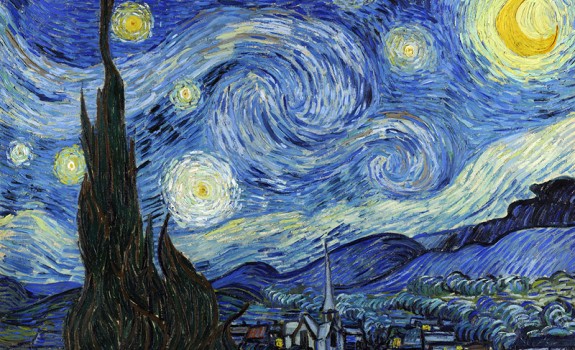Post-Impressionism is a predominantly French art movement that developed roughly between 1886 and 1905; from the last Impressionist exhibition to the birth of Fauvism. Post-Impressionism emerged as a reaction against Impressionists’ concern for the naturalistic depiction of light and color. Due to its broad emphasis on abstract qualities or symbolic content, Post-Impressionism encompasses Neo-Impressionism, Symbolism, Cloisonnism, Pont-Aven School and Synthetism, along with some later Impressionists work. The movement was led by Paul Cézanne, Paul Gauguin, Vincent van Gogh and Georges Seurat.
Vincent Willem van Gogh (1853-1890) was a dutch artist and a major Post-Impressionist painter. Van Gogh’s artwork and life are legendary in the art history of 19th and 20th century. “In the popular view, van Gogh has become the prototype of the misunderstood, tormented artist, who sold only one work in his lifetime.” Van Gogh completed many of his best-known works during the last two years of his life, and left more than 1900 drawings and paintings, including self-portraits, portraits, landscapes, and still lifes of cypresses. Among his best known works are Still Life: Vase with Twelve Sunflowers, The Café Terrace on the Place du Forum, Arles, at Night, and Starry Night. Starry Night is probably Vincent van Gogh’s most famous painting.
After years of anxiety and frequent bouts of mental illness, he died aged 37 from a self-inflicted gunshot wound. The extent to which his mental health affected his painting has been widely debated by art historians. Despite a widespread tendency to romanticize his ill health, modern critics see an artist deeply frustrated by the inactivity and incoherence wrought through illness. His late paintings show an artist at the height of his abilities, completely in control, and according to art critic Robert Hughes, “longing for concision and grace”.
Paul Cézanne (1839–1906) was a French artist and Post-Impressionist painter whose work laid the foundations of the transition from the 19th-century conception of artistic endeavour to a new and radically different world of art in the 20th century. Cézanne’s often repetitive, exploratory brushstrokes are highly characteristic and clearly recognizable. He used planes of colour and small brushstrokes that build up to form complex fields. The paintings convey Cézanne’s intense study of his subjects.
Cézanne can be said to form the bridge between late 19th-century Impressionism and the early 20th century’s new line of artistic enquiry, Cubism. Both Matisse and Picasso are said to have remarked that Cézanne “is the father of us all.”

